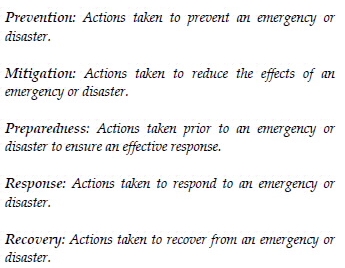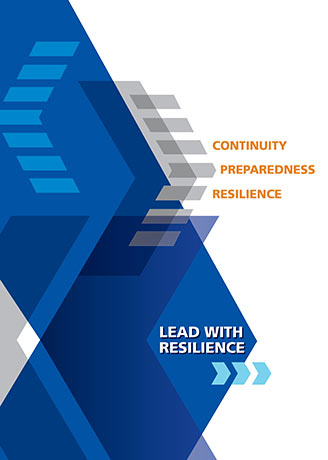Emergency Management Program
Emergency Management is a shared responsibility that builds a sustainable, prosperous and disaster-resilient community.
Organizations of all size today face extraordinary growing challenges - natural disaster, severe weather, climate change, infrastructures and technology failures, cyber invasions, emergent infectious diseases, man-made events to name just a few. These events were thought at one time to be rare. Today, they are increasing in both number and frequency globally and locally. Canada is not immune to these events which have become more prevalent. These events can have profound impact on organizations. They are now part of our everyday lives.
How can your organization manage an overall event, crisis?
Does your organization have an Emergency Management Program?
An emergency management program is based on a risk management approach and includes activities in the five core components of emergency management: prevention, mitigation, preparedness, response, and recovery. The aim of these reforms is to ensure that a proactive and coordinated approach to managing emergencies is in place to reduce the significant risks.
The implementation of an emergency management program will ultimately save lives and money, protect property, public health and the environment, maintain economic stability, and help assure the continuance of critical infrastructure. This will be accomplished by preventing some emergencies before they occur, lessening the frequency and potential impact of others, and by speeding the recovery process following an event.
Emergencies are caused by hazards – conditions or processes that have the potential to cause harm or loss to people and property. Such emergencies may arise as a result of inadequate prevention, mitigation or preparedness measures, or new factors that could not have been known or incorporated during the hazard identification and risk assessment process (HIRA). In basic terms, the hazard (risk that is a threat) produces adverse consequences and the possibility of an emergency. The identification and understanding of hazards, therefore, is an important first step in building an effective emergency management program to protect public safety and build disaster-resilient communities. This first step promotes a systems-based examination of the hazard and its consequential effects.
Components of Emergency Management


A comprehensive emergency management program is one that incorporates a risk management approach and integrates activities in each of the five components of emergency management.
